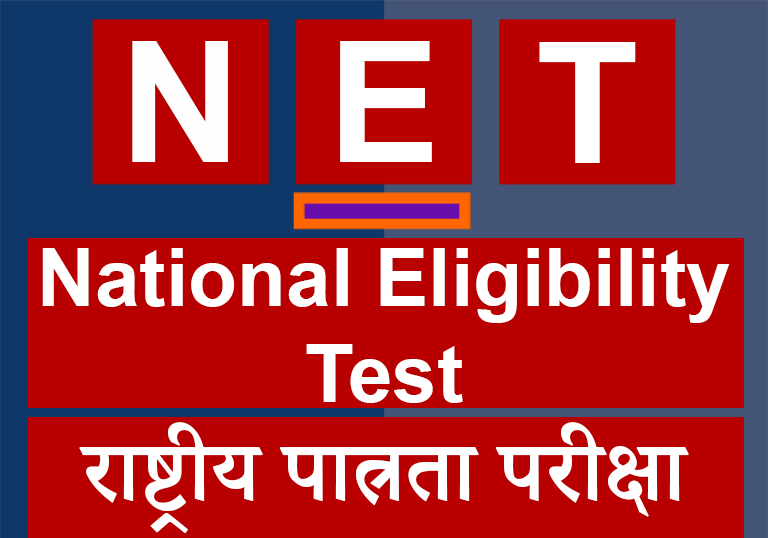The University Grants Commission National Eligibility Test (UGC NET) is a competitive examination in India conducted by the National Testing Agency (NTA). It is a qualifying test that determines eligibility for the post of Assistant Professor and Junior Research Fellowship (JRF) at Indian universities and colleges.
Introduction

Historical Background The UGC NET examination has a rich history, with its roots tracing back to the 1980s when it was conducted by the University Grants Commission (UGC) itself. Over the years, it has evolved into a highly competitive and standardized test under the administration of the NTA. UGC NET has played a pivotal role in maintaining the quality of higher education and fostering research endeavors across the country.
Objective and Significance
- Assistant Professor Eligibility: UGC NET determines the eligibility of candidates for the role of Assistant Professor in Indian universities and colleges. Qualifying this examination is a crucial prerequisite for teaching positions in higher education institutions.
- Junior Research Fellowship (JRF): In addition to Assistant Professor eligibility, UGC NET also serves as the qualifying examination for the prestigious Junior Research Fellowship (JRF). JRF recipients are eligible for financial support to pursue research in their chosen subject.
UGC NET Syllabus
| Syllabus Topics for UGC NET Paper I |
|---|
| Teaching Aptitude |
| – Teaching: Nature, objectives, characteristics, basic requirements |
| – Learner’s characteristics |
| – Factors affecting teaching |
| Research Aptitude |
| – Research: Meaning, characteristics, types |
| – Steps of research |
| – Methods of research |
| Reading Comprehension |
| – Comprehension of a passage and questions based on the passage |
| Communication |
| – Communication: Nature, characteristics, types, barriers, effective classroom communication |
| Reasoning (including Mathematical) |
| – Number series |
| – Letter series |
| – Codes |
| Logical Reasoning |
| – Understanding the structure of arguments |
| – Evaluating and distinguishing deductive and inductive reasoning |
UGC NET Exam Pattern
Paper I: General Paper on Teaching and Research Aptitude
- Exam Duration: 3 hours (180 minutes)
- Number of Questions: 50 multiple-choice questions (MCQs), all compulsory
- Total Marks: 100 marks (2 marks for each correct answer)
- Marking Scheme: No negative marking for incorrect answers
- Syllabus: Teaching Aptitude, Research Aptitude, Reading Comprehension, Communication, Reasoning, Logical Reasoning, Data Interpretation.
Paper II: Subject-specific Paper
- Exam Duration: 2 hours (120 minutes)
- Number of Questions: 100 multiple-choice questions (MCQs), all compulsory
- Total Marks: 200 marks (2 marks for each correct answer)
- Marking Scheme: No negative marking for incorrect answers
- Syllabus: Based on the subject selected by the candidate. The syllabus for Paper II is specific to the subject chosen.
Key Points:
| Aspect | Details |
|---|---|
| Language of the Question Paper | Available in English and Hindi |
| Medium of Examination | Online mode (Computer Based Test – CBT) |
| Selection Process | Qualify both Paper I and Paper II for Assistant Professor and/or Junior Research Fellowship (JRF) |
| Qualifying Marks | Minimum qualifying marks required in both papers; cutoff varies based on category (General, OBC, SC, ST, PwD) |
| Cutoff Calculation | Final cutoff calculated based on the aggregate marks of Paper I and Paper II |
| Admission Criteria | Award of JRF and Assistant Professor eligibility based on performance and availability of JRF slots |
Preparation Strategies of UGC Net
- Understand the Exam Pattern and Syllabus: Familiarize yourself with the UGC NET exam pattern and syllabus for both Paper I and Paper II. Understand the marking scheme, number of questions, and topics to be covered.
- Create a Realistic Study Plan: Develop a daily, weekly, and monthly study plan based on the syllabus. Allocate time for each topic, giving more emphasis to your weaker areas.
- Refer to Official Resources: Utilize the official UGC NET syllabus and previous years’ question papers available on the official website. These resources give you a clear idea of the exam structure and the type of questions asked.
- Study Material Selection: Choose reliable study materials, reference books, and online resources covering all topics of the syllabus. Opt for books written by reputed authors or recommended by experts.
- Practice Regularly: Regular practice is crucial. Solve previous years’ question papers and take mock tests to improve your speed and accuracy. Analyze your performance and work on weak areas.
Examination Day Guidelines
| Guidelines | Details |
|---|---|
| Admit Card | Ensure you have a printed copy of your UGC NET admit card. |
| Identification Proof | Carry a valid government-issued photo ID matching the name on your admit card. |
| Reporting Time | Arrive well before the reporting time mentioned on your admit card. |
| COVID-19 Precautions | Adhere to COVID-19 guidelines set by the examination authorities. |
| Items to Bring | Pen (black or blue), pencil, eraser, sharpener, water bottle (transparent), valid ID. |
| Biometric Verification | Be prepared for fingerprint scanning and photograph capture for verification. |
| Seat Allocation | Sit at your designated seat according to instructions from the staff. |
| Exam Instructions | Pay attention to invigilator’s and exam paper’s instructions. |
| Time Management | Manage your time efficiently according to the exam schedule. |
| Fill OMR Sheet Carefully |
Results and Scorecard
UGC NET Results:
- Declaration of Results:
UGC NET results are typically declared within a few weeks to a couple of months after the examination is conducted.
2. Official Website:
The results are made available on the official website of the National Testing Agency (NTA) or the respective UGC NET conducting authority.
3. How to Check Results:
Candidates need to visit the official website, enter their roll number and other required details, and then access their results.
4. Qualifying Criteria:
UGC NET has specific qualifying criteria based on the candidate’s performance in both Paper I and Paper II. Candidates need to achieve the minimum qualifying marks.
5. Score Calculation:
The scores are calculated based on the marking scheme of UGC NET. For each correct answer, two marks are awarded, and there is no negative marking.
UGC NET Scorecard:
- Availability:
After the declaration of results, candidates can download their UGC NET scorecard from the official website.
2. Details on Scorecard:
The scorecard includes the candidate’s name, roll number, subject, category, total marks obtained, and the qualifying status.
3. Validity:
The UGC NET scorecard is valid for a specific period, usually two years from the date of declaration of the result.
4. Importance:
The scorecard is a crucial document for candidates seeking Assistant Professor positions in universities and colleges or applying for Junior Research Fellowship.
Conclusion
The University Grants Commission National Eligibility Test (UGC NET) is a significant milestone in the academic and research journey of countless individuals in India. As we conclude our exploration of UGC NET, it’s evident that this examination plays a pivotal role in determining eligibility for Assistant Professor positions and grants Junior Research Fellowships (JRF) in Indian universities and colleges.
FAQs
UGC NET, or the University Grants Commission National Eligibility Test, is a national-level examination in India. It determines eligibility for Assistant Professor positions and awards Junior Research Fellowships (JRF) in Indian universities and colleges.
The UGC NET exam is conducted by the National Testing Agency (NTA) on behalf of the University Grants Commission (UGC).
UGC NET consists of two papers – Paper I (general aptitude) and Paper II (subject-specific). Paper I has 50 questions, and Paper II has 100 questions. Both papers are objective-type multiple-choice questions (MCQs).
The eligibility criteria vary based on the post applied for (Assistant Professor or JRF). Generally, a master’s degree with a certain percentage (55% for general category) is required. The age limit for JRF is 30 years (relaxation for reserved categories).
Read Also
Related posts:
- AMC Full Form: Benefits, Components, Needs, Advantage
- ORS Full Form: Dehydration, Myths, Flavors, Varieties & Facts
- PCC Full Form: Importance, Types, Application Process
- PAN Full Form: Legal Provisions, Regulations,
- BRB Full Form: Productive, Routine, Distractions
- MCD Full From: Introduction, Responsibility, Challenges
- CT Scan Full Form: Scans, price, Advantages
- USA Full Form: History, Economics,Technology, culture




















